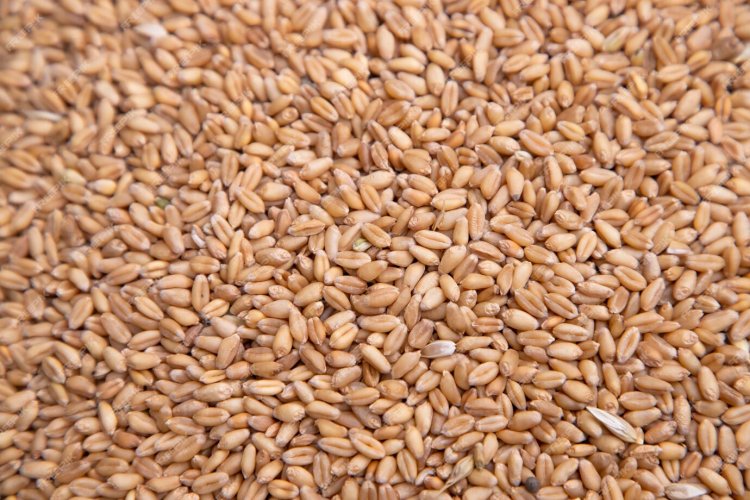- Courses
- GS Full Course 1 Year
- GS Full Course 2 Year
- GS Full Course 3 Year
- GS Full Course Till Selection
- Answer Alpha: Mains 2025 Mentorship
- MEP (Mains Enrichment Programme) Data, Facts
- Essay Target – 150+ Marks
- Online Program
- GS Recorded Course
- Polity
- Geography
- Economy
- Ancient, Medieval and Art & Culture AMAC
- Modern India, Post Independence & World History
- Environment
- Governance
- Science & Technology
- International Relations and Internal Security
- Disaster Management
- Ethics
- NCERT Current Affairs
- Indian Society and Social Issue
- NCERT- Science and Technology
- NCERT - Geography
- NCERT - Ancient History
- NCERT- World History
- NCERT Modern History
- CSAT
- 5 LAYERED ARJUNA Mentorship
- Public Administration Optional
- ABOUT US
- OUR TOPPERS
- TEST SERIES
- FREE STUDY MATERIAL
- VIDEOS
- CONTACT US
Why the Government Has Tightened Wheat Stock Limits
Why the Government Has Tightened Wheat Stock Limits

- In December 2024, The Government of India revised the wheat stock limits for traders, wholesalers, retailers, processors, and big chain retailers in response to concerns over rising wheat prices, hoarding, and price manipulation.
- This measure is aimed at price stabilization, ensuring food security, and preventing market distortions due to speculative actions.
- India has recorded a record wheat production of 1132 Lakh Metric Tonnes (LMT) during the Rabi 2024 season, which has ensured sufficient availability of wheat in the country.
- However, to prevent artificial scarcity and ensure stable prices, the government decided to impose these stock limits.
- The Amendment to the Removal of Licensing Requirements, Stock Limits, and Movement Restrictions on Specified Foodstuffs Order (first issued in June 2024, and revised in September 2024) is part of the government’s effort to regulate food stocks, prevent speculative trading, and promote market transparency.
Key Features of the Revised Wheat Stock Limit
The revised stock limits apply to four main groups of wheat holders:
- Traders/Wholesalers
- Retailers
- Big Chain Retailers
- Processors
These changes are made to prevent hoarding and ensure that wheat is available at reasonable prices throughout the country.
Revised Stock Limits: What Has Changed?
The government has updated the stock limits for wheat until March 31, 2025, to avoid stockpiling or price manipulation.
New limits compared to the previous ones:
|
Entities |
Existing Stock Limit |
Revised Stock Limit |
|
Traders/Wholesalers |
2,000 MT (metric tonnes) |
1,000 MT (half of the previous limit) |
|
Retailers |
10 MT per retail outlet |
5 MT per retail outlet |
|
Big Chain Retailers |
10 MT per outlet + (10 × number of outlets) at depots |
5 MT per outlet, subject to a maximum of (5 × number of outlets) at all depots and outlets combined |
|
Processors |
60% of Monthly Installed Capacity (MIC) × remaining months of FY 2024-25 |
50% of Monthly Installed Capacity (MIC) × remaining months until April 2025 |
Implementation and Compliance:
- Effective Date: The revised stock limits are effective immediately and will remain in force until March 31, 2025.
- Registration and Monitoring:
- All entities holding wheat stocks (traders, retailers, processors, and big chain retailers) must register on the Wheat Stock Limit Portal (https://evegoils.nic.in/wsp/login)
- Entities are required to update their stock information every Friday on the portal to ensure real-time monitoring.
- Non-compliance Penalties:
- Failure to comply with the revised stock limits or failure to register will result in penalties under the Essential Commodities Act, 1955. Possible penalties include fines or seizure of excess stock.
- The Essential Commodities Act 1955, is an act of the Parliament of India that was established to ensure the delivery of certain commodities or products, the supply of which, if obstructed due to hoarding or black marketing, would affect the normal life of the people. This includes foodstuff, drugs, fuel etc.
- Stock Adjustment Requirement:
- Any entity holding more wheat than the revised stock limits must bring their stock in line with the new limits within 15 days from the notification date.
Reasons Behind the Tightened Stock Limits:
- Wheat Price Surge: In November 2024, wheat prices surged to Rs 34,000 per tonne, primarily due to:
- Strong demand for wheat,
- Limited supply in the market,
- Delays in the release of wheat from government reserves.
- Hoarding and Speculation Concerns: There were concerns that hoarding and speculative trading could artificially inflate prices and disrupt the wheat market.
- By tightening the stock limits, the government aims to curb these activities.
- Lean Supply Period (Until March-April 2025): The government’s decision comes at a time when the new wheat harvest will not be available until March-April 2025, creating a lean supply period. The stock limits are designed to ensure that there is no disruption in wheat availability during this time.
- Previous Stock Control Measures:
- June 24, 2024: The government initially imposed stock limits for wheat.
- September 9, 2024: Stock limits were further tightened.
- The government has also introduced the Open Market Sale Scheme (OMSS), under which 2.5 million tonnes of wheat will be sold through weekly e-auctions until March 2025 to boost supply.
- The Open Market Sale Scheme (OMSS) is a program run by the Food Corporation of India (FCI) to sell excess food grains at pre-determined prices in the open market.
- The goal of the scheme is to regulate the supply and prices of food grains, and to curb inflation.
Wheat Market Trends and Price Expectations:
- Price Stabilization:
Experts expect wheat prices to stabilize and drop to Rs 29-30 per kg when the new wheat crop is harvested in March-April 2025. The government's intervention is aimed at keeping prices under control until then. - Shifting Consumption Patterns:
- In many regions of India, rice consumption is declining, while wheat consumption is increasing, especially in rural areas.
- This has further stressed the importance of ensuring affordable wheat prices.
- Government Reserves:
The Food Corporation of India (FCI) currently holds 222.64 LMT of wheat, which is much higher than the required buffer stock levels, ensuring no immediate shortage. The government is managing these reserves to prevent unnecessary price hikes.
Expected Impact and Benefits:
- Control on Price Inflation: The primary goal is to prevent sharp price hikes due to hoarding or speculative actions. These measures are designed to benefit lower-income groups and ensure affordable wheat prices.
- Market Transparency: The Wheat Stock Limit Portal enhances transparency in the wheat market by tracking wheat stocks in real-time, preventing market manipulation or the creation of a false scarcity.
- Boost to Food Security Programs: Stabilizing wheat prices ensures the steady supply of wheat to food security schemes like:
- Public Distribution System (PDS)
- Mid-Day Meals
- National Food Security Act (NFSA)
- Ensuring Smooth Distribution:
By regulating stock limits across the entire value chain, the government aims to prevent regional disparities and ensure that wheat is distributed consistently across the country.
Challenges and Considerations:
- Implementation and Compliance Challenges: The government will need to ensure effective monitoring and enforcement across States and Union Territories. Ensuring compliance at the regional level will be crucial to avoid any manipulation.
- Impact on Business Operations: While the stock limits aim to control prices, processors, traders, and retailers may face challenges in their business operations due to stock restrictions. A balance needs to be maintained between market regulation and smooth functioning of the wheat value chain.
- Balancing Supply and Demand: The government must ensure that stock limits do not result in shortages for processing and retail demands, as wheat is a critical staple food for millions of Indians.
Broader Economic Implications:
- Retail Inflation: Wheat price inflation is one of the factors contributing to higher retail inflation in India, which surged to a 14-month high in October 2024. The government's intervention aims to curb the inflationary pressures on essential goods like wheat and vegetables.
- Inflation Pressures: A study by Axis Bank suggests that inflation might remain high due to delayed supply responses despite increased demand, partly fueled by government income transfer schemes. The wheat stock limit regulation is one of the tools to mitigate this inflation.
Conclusion:
The Indian government’s decision to revise wheat stock limits is a well-timed move to Control inflation and prevent artificial price hikes, Prevent hoarding and ensure the steady availability of wheat at fair prices, Support food security initiatives like PDS, Mid-Day Meals, and NFSA.



